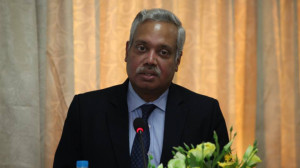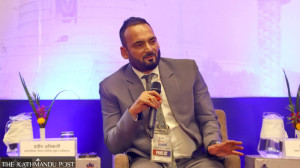National
11 years of peace agreement: Conflict victims’ wait for justice continues
Promulgation of the constitution through a Constituent Assembly, integration of Maoist combatants into the security forces,
Binod Ghimire
Promulgation of the constitution through a Constituent Assembly, integration of Maoist combatants into the security forces, management of arms and justice to war-era victims were some of the major issues the Comprehensive Peace Accord (CPA) envisioned when it was signed between the government and then Maoist rebels on November 21, 2006.
The peace agreement ended the decade-long crippling war which killed nearly 17,000 people and displaced thousands.
In the last 11 years, the country overthrew the centuries-old monarchy, integrated former Maoist fighters into the Army and adopted a new constitution ensuring a federal republic and secularism. The country held local elections, first in 20 years, in May, June and September in three phases under the new constitution and provincial and federal elections are just round the corner.
Yet the major component of the peace process that began with the signing of the deal—justice to conflict victims—is yet to be achieved.
It took more than nine years for the government to form two transitional justice mechanisms—the Truth and Reconciliation Commission (TRC) and the Commission of Investigation on Enforced Disappeared Persons (CIEDP).
During their two-year tenure, the transitional justice bodies could do nothing more than gathering complaints from the conflict victims. Their term was extended for one year in February, but they are hamstrung by lack of budget and resources. On top of that, they lack laws needed to guide the investigation process.
They have so far received more than 63,000 complaints. Their extended one-year term is set to expire on February 10.
“At the present pace, the two transitional bodies will not be able to complete investigation even in the next 15 years,” said Sudip Pathak, a member of National Human Rights Commission (NHRC).
In the reading of the national human rights watchdog, transitional justice never became the priority of the parties and the successive governments.
Bishnu Pathak, spokesperson for the CIEDP, said the commission has 15 staffers against the need of 40 and the Ministry of Finance never releases the budget it wants.
Similarly, the existing legal provisions don’t recognise enforced disappearance as a crime against humanity.
“The government and political parties have turned a deaf ear to our frequent requests,” Pathak lamented. “How can you expect us to perform in such environment?”
The case is no different with the TRC.
Nepal is yet to criminalise torture while the parties and government are reluctant to amend its Act as per the Supreme Court orders.
The apex court in January 2015 ordered the government to make around a dozen amendments to the Act as per the international standard.
Prakash Osti, a member of the NHRC, said the government earlier found an excuse in constitution drafting and now it is busy with elections. He claimed that there will
be no progress in the investigation even if the terms of two mechanisms are extended unless the needed laws are put in place and there is adequate availability of the budget and human resources.
Suman Adhikari, chairperson of the Conflict Victims’ Common Platform, says the present scenario shows the two transitional justice mechanisms have become nothing but a tool of government and parties to deceive the victims.
CIEDP spokesperson Pathak went on to say: “The people and parties who once launched insurgency are leading the government. We can’t expect them to provide constructive support in delivering justice to the victims.




 13.12°C Kathmandu
13.12°C Kathmandu















